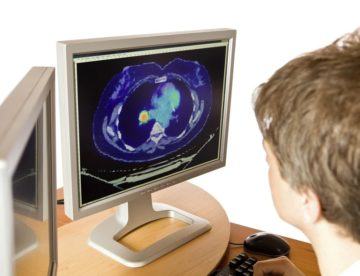From Nature:
 If a single medical objective could be applied to the entire range of cancers, it would be detecting the disease as soon as possible. “At the highest level, finding any cancer early gives you the opportunity for curative treatments,” says Andrea Ferris, CEO of research funding organization, LUNGevity. Although the goal of early detection emerged decades ago, much work remains to be done. Low-dose computed tomography (CT) scanning, used to detect lung cancer, has not changed much in the past ten years, and Ferris says that another part of the problem is a lack of public awareness of the “importance of screening and that it can save lives.”
If a single medical objective could be applied to the entire range of cancers, it would be detecting the disease as soon as possible. “At the highest level, finding any cancer early gives you the opportunity for curative treatments,” says Andrea Ferris, CEO of research funding organization, LUNGevity. Although the goal of early detection emerged decades ago, much work remains to be done. Low-dose computed tomography (CT) scanning, used to detect lung cancer, has not changed much in the past ten years, and Ferris says that another part of the problem is a lack of public awareness of the “importance of screening and that it can save lives.”
There are other issues too. Clinicians need more powerful tools to detect and track these diseases, which can be hard to find and identify at the earlier stages before a patient develops symptoms. Cancers start small, often deep in tissues, where the malignancy evades early detection. Plus, even when symptoms develop, they can mimic non-cancerous diseases. Simply put, detecting cancer at its earliest stages presents challenges that vary from one type of cancer to the next.
More here.
